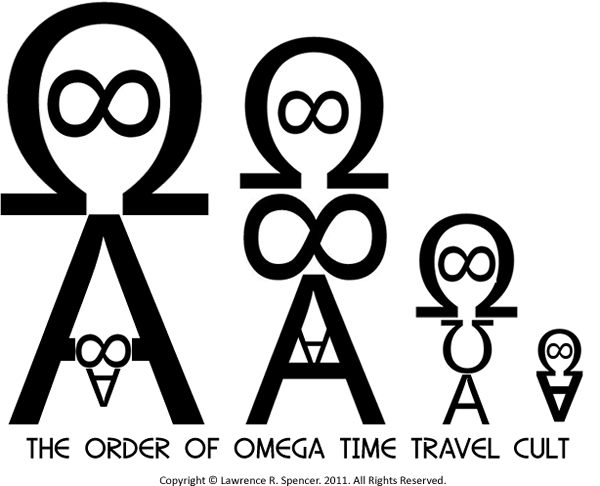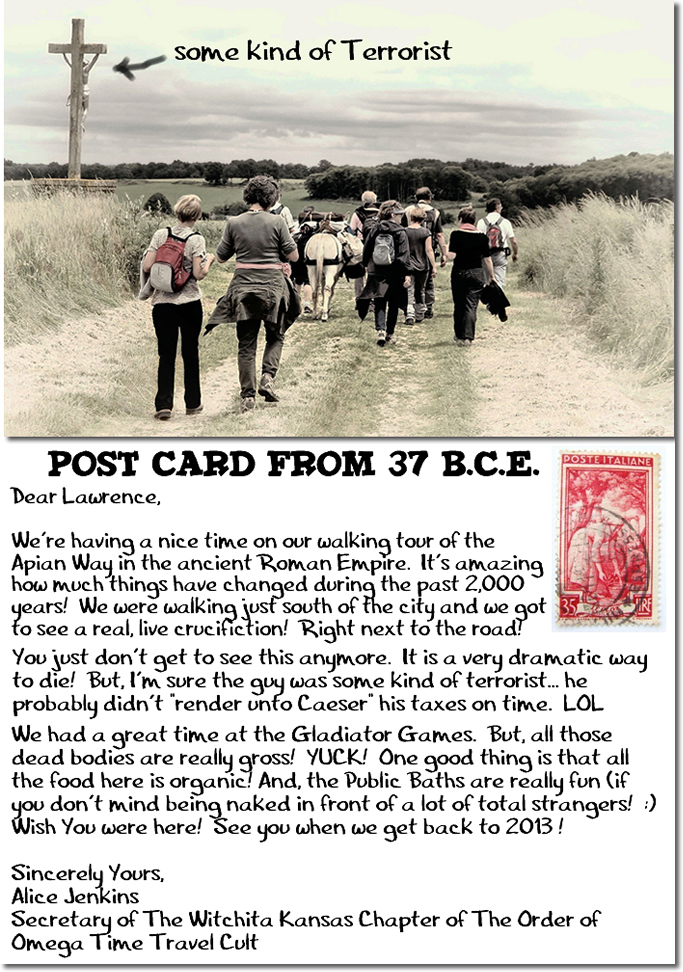Republished by Blog Post Promoter
Tag Archives: time travel
NO TIME MACHINE
Republished by Blog Post Promoter
HAPPY YEAR(s)
Republished by Blog Post Promoter
Time is relative to the point of view of the observer. Regardless of your respective definition of a “year”, you are traveling through time in the physical universe, as measured by one or more monitoring systems devised by man to track the motion of particles through space. Here is a short list of definitions of the word “year”.
(Visualization of the orbit of the Sun (yellow dot and white curve) around the Galactic Centre (GC) in the last GALACTIC YEAR. The red dots correspond to the positions of the stars)
The galactic year, also known as a cosmic year, is the duration of time required for the Solar System to orbit once around the center of the Milky Way Galaxy.[1] Estimates of the length of one orbit range from 225 to 250 million “terrestrial” years. Solar System is traveling at an average speed of 828,000 km/h (230 km/s) or 514,000 mph (143 mi/s),which is about one 1300th of the speed of light. If you could travel at that speed in a jet aircraft along the equator, you would go all the way around the world in approximately 2 minutes and 54 seconds. Even at this speed, it still takes the solar system 230 million years to orbit the center of the Milky Way Galaxy one time. Hang on and enjoy the ride!
For those who prefer shorter periods of time, here are a list of the Wikipedia definitions of other “years”
- 2 Seasonal year
- 3 Calendar year
- 4 Other annual periods
- 5 Astronomical years
- 6 Symbol
- 7 “Great years”
This message has been transported to you as a public service by the Order of Omega Time Travel Cult family!
TIME TRAVEL SUCKS!
Republished by Blog Post Promoter
This educational film is endorsed for audiences of All Ages — Past, Present and Future — by the Wichahatchi, WY Chapter of the Order of Omega Time Travel Cult.
TOURISTS AT A CRUCIFICXION
Republished by Blog Post Promoter
Crucifixion was often performed to terrorize and dissuade its witnesses from perpetrating particularly heinous crimes. Victims were left on display after death as warnings to others who might attempt dissent. Crucifixion was usually intended to provide a death that was particularly slow, painful (hence the term excruciating, literally “out of crucifying”), gruesome, humiliating, and public, using whatever means were most expedient for that goal. Crucifixion methods varied considerably with location and time period.
The Greek and Latin words corresponding to “crucifixion” applied to many different forms of painful execution, from impaling on a stake to affixing to a tree, to an upright pole (a crux simplex) or to a combination of an upright (in Latin, stipes) and a crossbeam (in Latin,patibulum).
In some cases, the condemned was forced to carry the crossbeam on his shoulders to the place of execution. A whole cross would weigh well over 300 pounds (135 kg), but the crossbeam would not be quite as burdensome, weighing around 100 pounds. The Roman historian Tacitus records that the city of Rome had a specific place for carrying out executions, situated outside the Esquiline Gate, and had a specific area reserved for the execution of slaves by crucifixion. Upright posts would presumably be fixed permanently in that place, and the crossbeam, with the condemned person perhaps already nailed to it, would then be attached to the post.
While a crucifixion was an execution, it was also a humiliation, by making the condemned as vulnerable as possible. Although artists have depicted the figure on a cross with a loin cloth or a covering of the genitals, writings by Seneca the Younger suggest that victims were crucified completely naked. When the victim had to urinate or defecate, they had to do so in the open, in view of passers-by, resulting in discomfort and the attraction of insects. Despite its frequent use by the Romans, the horrors of crucifixion did not escape mention by some of their eminent orators. Cicero for example, described crucifixion as “a most cruel and disgusting punishment”, and suggested that “the very mention of the cross should be far removed not only from a Roman citizen’s body, but from his mind, his eyes, his ears.”
Frequently, the legs of the person executed were broken or shattered with an iron club, an act called crurifragium, which was also frequently applied without crucifixion to slaves. This act hastened the death of the person but was also meant to deter those who observed the crucifixion from committing offenses. — REFERENCE SOURCE: Wikipedia.org





